I just can’t keep from messing with the Springfield Armory Echelon. Everything about the fit, the ergonomics of the slide, the optics mounting system, the trigger and the magazine capacity tells me I should be able to shoot this better than I can.
The factory-supplied sights are some of the best factory-supplied sights on a service/service compact or micro-9 pistol. The trigger is just fine and I have an easy reach to a proper trigger finger placement. Maybe it’s too easy to shoot well and I overthink it.
Let’s add “gizmos.”
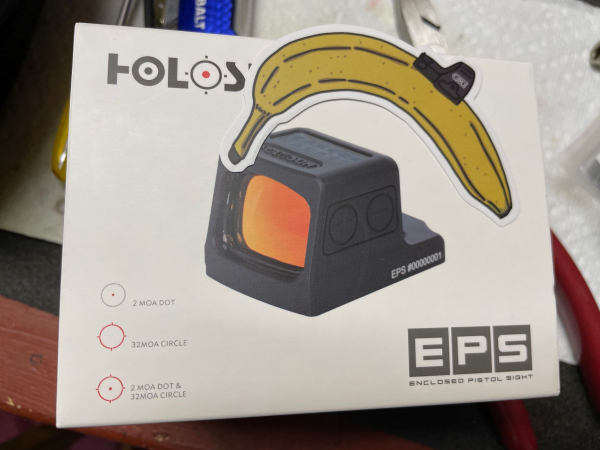
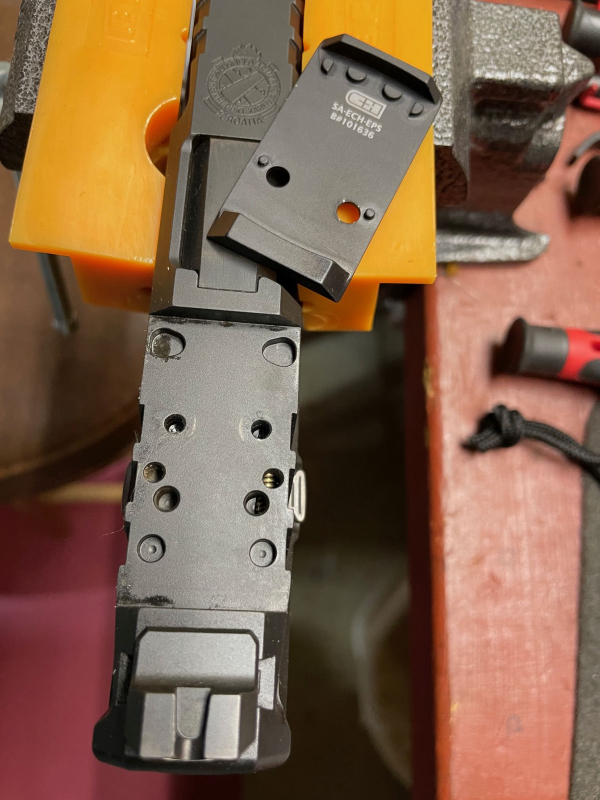
And so I did with this. I had a Holosun EPS-Red-MRS -- enclosed pistol sight – to fit. Sadly, mounting it to the Echelon leaves an untidy gap in front of and behind the optic. When the slide is rocketing back-and-forth, that’s a bad plan for stability.
C&H Precision Weapons to the rescue with their “Echelon to Holosun Optic Mounting Plate.” I’m no fan of adding plates to PMOs; it wrecks the ability to cowitness with irons and adds more complexity in the way of fasteners.
Not with this product. It fits the optics cut like a glove (“If it don’t fit, time to quit”) and secures with their supplied mounting bolts.
It’s thin, aluminum, and the EPS is engaged on the lugs machined into the mounting plate – a very stable system indeed.
Why the EPS? It was here, it has the enclosed emitter – a handy arrangement if you intend to carry on a service pistol or a deep concealment pistol. There’s not going to be anything to cover the laser emitter if it’s shrouded, removing one potential failure point for optics.
Unlikely as that may be …
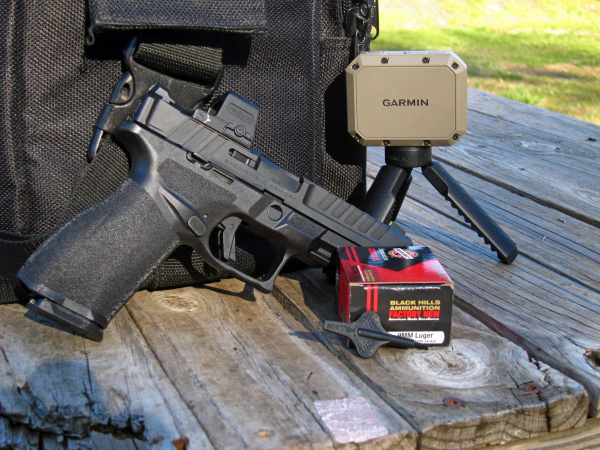
Taking to the range, after the thread locker had cured overnight, I endured the wind and “moving target” to try to zero the optic to the pistol. I used ammunition from Black Hills, their 115gr. ball load, from the bench, seated. My hands were supported on a range bag and I “lasered” the distance at sixteen yards. I set up the Garmin Xero C1 Pro to record velocity, averaging 1,158 fps. We started with impacts about 6” high, 2” right. In a matter of moments – and less than 10 rounds – the bullets were striking inside the “10” ring.
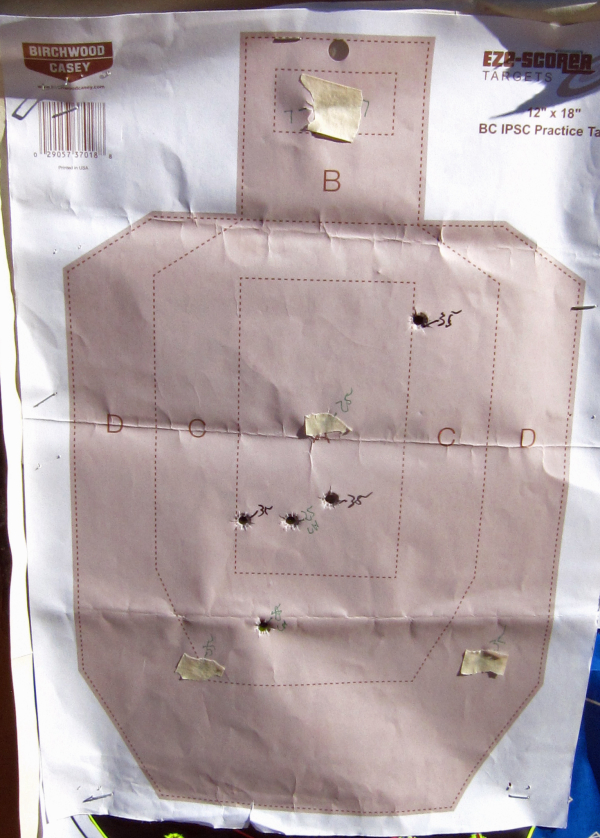
To confirm, I posted the BC (Birchwood Casey) EZE-Scorer 12” x 18” BC IPSC reduced size silhouette and stepped back to 25 yards. From there, shooting left-handed, I had one round strike low on the “C” zone and the other strike the “A” zone low. I followed up from 35 yards, where I clipped the A-zone at 1 o’clock and at 7 o’clock. While the spread was there, the reduced silhouette has a likewise reduced A-Zone. That was pretty fair.
On the next trip after zeroing the piece, it was time to get some distance, do some moving and shooting, and get close to determine the ranges at which I could predict hits.
First, I ensured the bolts were tight. This is likely something to be done every time the pistol is holstered for the day. Ammo used was old stock Federal Premium 124 grain Expanding Full Metal Jacket +P (P9CSP1) ammo. There were no stoppages, which is typical for the Springfield Armory Echelon pistol. Magazines were both loaded to full capacity.
Starting at fifty yards, two rounds went into the “high thoracic” area of the main scoring zone of the TQ-21 target, tending right, and a third round hit significantly lower, center, in the main scoring area. That low hit was, no doubt, shooter induced.
At 25 yards on a B8 repair center, I put five rounds into the target with a 44/50 score (88%).

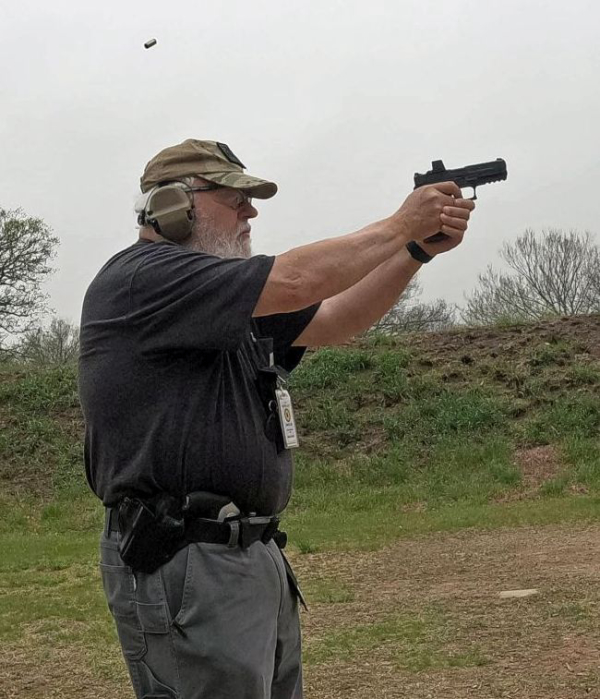
I worked on hits from compressed low ready, a technique recommended in the book Red Dot Mastery in a piece authored by Erick Gelhaus. Look at the image; it’s the classic low ready with elbows tucked. I first saw this technique used by our contributor Dave Spaulding and adopted it then. It’s particularly good when using a pistol mounted optic, about ensuring dot acquisition as the gun comes into line.
I then engaged on a B-8 from around fifteen yards after lateral movement across the range. I’m given to understand that a good many shooters are missing the dot after movement, reloads, etc. I did this to check that tendency with me while using the EPS.
Stepping up, I did some work from five yards from compressed ready. Even crowding for speed, I didn’t “lose” the reticle.
I finished with the seven yard “trademark roundup.” I targeted the target’s barcode in the upper right corner, the “Champion” logo in the upper left, the lower left “Onalaska Operations” mark and the lower right “Official Competition-NRA” mark. Starting upper right, I moved down to lower right, lower left, upper left and back around the target until the ammo supply was depleted.
That’s a good close-range exercise, moving the reticle from ‘target’ to ‘target’ and having to make precision hits.
Perhaps someday I’ll get better with PMOs – but I won’t hold my breath waiting for it. It’s good range fun and gets me time behind the sights.
— Rich Grassi